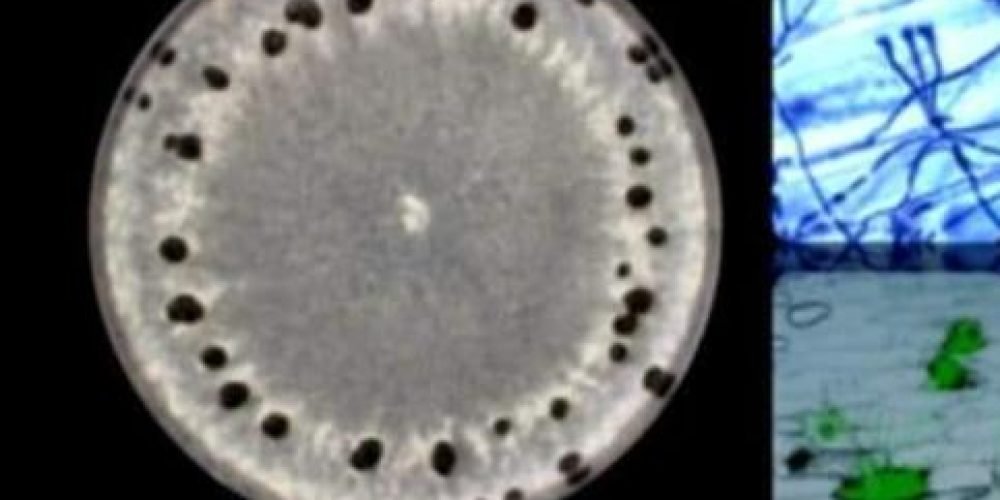Table of contents of the article
ToggleBacterial spots are considered one of the problems facing tomato growers and affect the quality of the fruits. In this article on your website, World of Plants, we review methods of prevention and control.
Bacterial spots on tomatoes
It is caused by a bacteria called Pseudomonas syringae pv. Tomato: This disease has been known since the early 1930s, but it did not cause heavy losses. However, cold and humid environmental conditions helped in the development of the disease.
Symptoms of bacterial spot disease on tomatoes
Symptoms include:
- Small black dots, 1 to 2 cm in diameter, form, with a separate yellow halo.
- The dots have a greasy appearance.
- The leaves are severely wrinkled (Related article: Tomato leaf curl disease).
Causes of bacterial spot disease on tomatoes
The causal organism causing patients
It is a division based on pathovar - pv) Pseudomonas syringae pv. Tomato This disease is caused by bacteria. The type of bacteria is named after the host plant on which the microbe inhabits. It is a bacillus. Its dimensions are 1.6 - 3.2 microns in length and 2.2 microns in width. Non-aggressive. Gram-negative. Facultatively anaerobic. Moves by a single terminal flagella. Bacteria are found either singly or in pairs or chains. It is short and secretes the pigment Pyoveadin (fluorescein), which turns the environment into a bluish-green color. It also secretes a specialized toxic compound, Coronatine. This compound is responsible for the yellow halo surrounding the damage on the affected leaf and is also responsible for the stunting of young seedlings.
Two strains of this bacteria, Race O and Race L, are known. The Pro gene was discovered in tomatoes, which gives resistance to Race 2, but does not give resistance to Race 2: therefore, Race 1 is more widespread than Race O, and its spread continues.
Symptoms of bacterial spots on tomatoes
Symptoms appear on any part of the plant's foliage, whether leaves, stems, or fruits, but the bacteria do not infect only green fruits with a diameter less than a name. The symptom appears on the leaves as small black dots of different shapes and clusters, but the diameter of the spot does not exceed 1.3 mm, and these dots are often surrounded by a yellow halo. The dots or spots are concentrated and often bulge from the edges of the leaflets, causing the death of the affected tissue and the falling of the edges. If these spots merge, this may lead to the death of the leaf. If plants are infected before the fifth leaf stage, they are stunted and give a poor yield (9) Fig). Once the infection is confirmed, the symptom appears as dark brown or black spots with an oval shape that tends to be round. Symptoms appear on the fruits - only green fruits are affected as spots with a diameter of less than 1-3 mm. Black, sunken, circumscribed surrounded by a narrow green or yellow halo. These dots are superficial and rarely go deeper than the skin cells of the fruit. The black dots continue on the fruits after maturity (Figure 10).
Disease development and spread: Growth and spread of bacterial spots on tomatoes
The main sources of infection for this disease are seeds, infected seedlings, infected plant remains - and contaminated machinery - as well
Clearance and structures of the greenhouse used in production.
Bacteria enter the plant through natural openings, whether stomata or water pores, or through wounds resulting from insects, field workers, dust-laden winds, rain, and also water spray resulting from high-pressure sprinklers.
ml. As for the small green fruits, they are penetrated through the holes of the Trichomas present on them. This disease is suitable for a cold climate with humid conditions. The disease spreads greatly when cold temperatures are available
Less than 21°C (70) and high relative humidity with an extended period of free humidity. The disease begins to develop at...
18°C (63°F) and its growth decreases significantly when the temperature reaches 32°C (89°F). Therefore, fruits that grow early in the early season can be severely infected. After the infection occurs, a complex internal relationship is established between the host plant, the parasite, and the conditions.
Middle: Symptoms of the disease appear 75 days after infection.
Control resistance against bacterial spots on tomatoes
- Do not plant tomatoes in areas previously planted with the same crop if symptoms of infection are found. With irrigation with a crop that is not host to the pathogen, such as small grains or maize.
- Delay planting in the spring to avoid exposure of plants to cold and wet conditions.
- Use disease-free seeds and treat them with hot water before planting.
- Control weeds around and inside the greenhouse or field, while implementing a health and hygiene program for workers before the current crop season.
- Choose seedlings free of infection, and if the weather is suitable for the spread of the disease, the seedlings are treated in the nursery in Maine
- Ncozeb + stabilized copper + streptomycin as a bacterial pesticide replaces copper in the final spray, with the stage of not using streptomycin in the permanent field after transplanting.
- When symptoms of bacterial spots appear, vertical irrigation is prohibited and furrow irrigation is used. – Avoid working in the field while the plants are wet.
- Dithane M45) mancozeb, one of the compounds + copper hydroxide. Conduct an inhibitor spraying program with the compound - Penncozeb, starting from flowering until the first fruits formed reach 1/3 of their final size, after which the risk of contracting droplet bacteria disappears, taking into account stopping the spraying when the temperature reaches 33°C ( 90f). After the disease risk has passed, the copper compound is removed from the program, while treatment with resistant mancozeb continues. The Vegetative Complex seminars, especially the full moon seminar.
comments
- Adding mancozeb increases the resistance efficiency of copper.
- Follow the instructions written on the pesticide used carefully, especially the percentage of use and when making a tank mix
- Follow all warnings and limits on the use of these pesticides.
- Most strains of drop bacteria isolated from tomato fields in Ontario, Canada, are either resistant to copper-based bactericides or have the ability to tolerate these compounds.
Treatment and prevention against bacterial spots on tomatoes
Like bacterial spots, it is difficult to control, but this disease is prevented as follows:
- Use disease-free seeds treated with hot water.
- Use a good preventative spray program.
- Follow a weed control program to reduce the chances of bacterial spots.
- Follow rotation in crop cultivation, because bacteria are transmitted from plant remains and weeds.
In conclusion, we would like to note that we, at the world of plants website, offer you all the necessary services in the world of plants, we provide all farmers and those interested in plants with three main services::-
- Artificial intelligence consulting service to help you identify diseases that affect plants and how to deal with them.
- Blog about plants, plant diseases and care of various crops ... You are currently browsing one of her articles right now.
- An application that provides agricultural consultations to clients, as well as a service for imaging diseases and knowing their treatment for free – Click to download the Android version from Google Play Store، Click to download the IOS version from the Apple App Store.
the reviewer :




